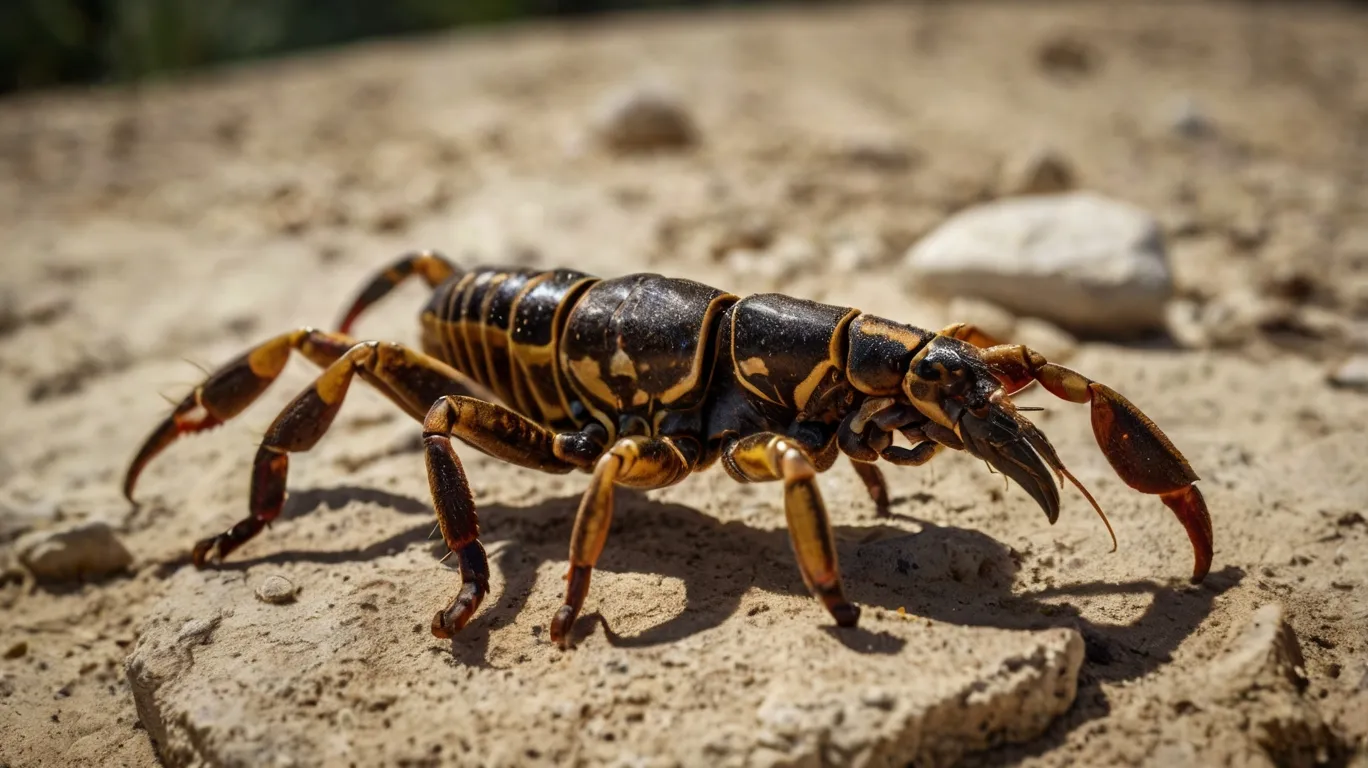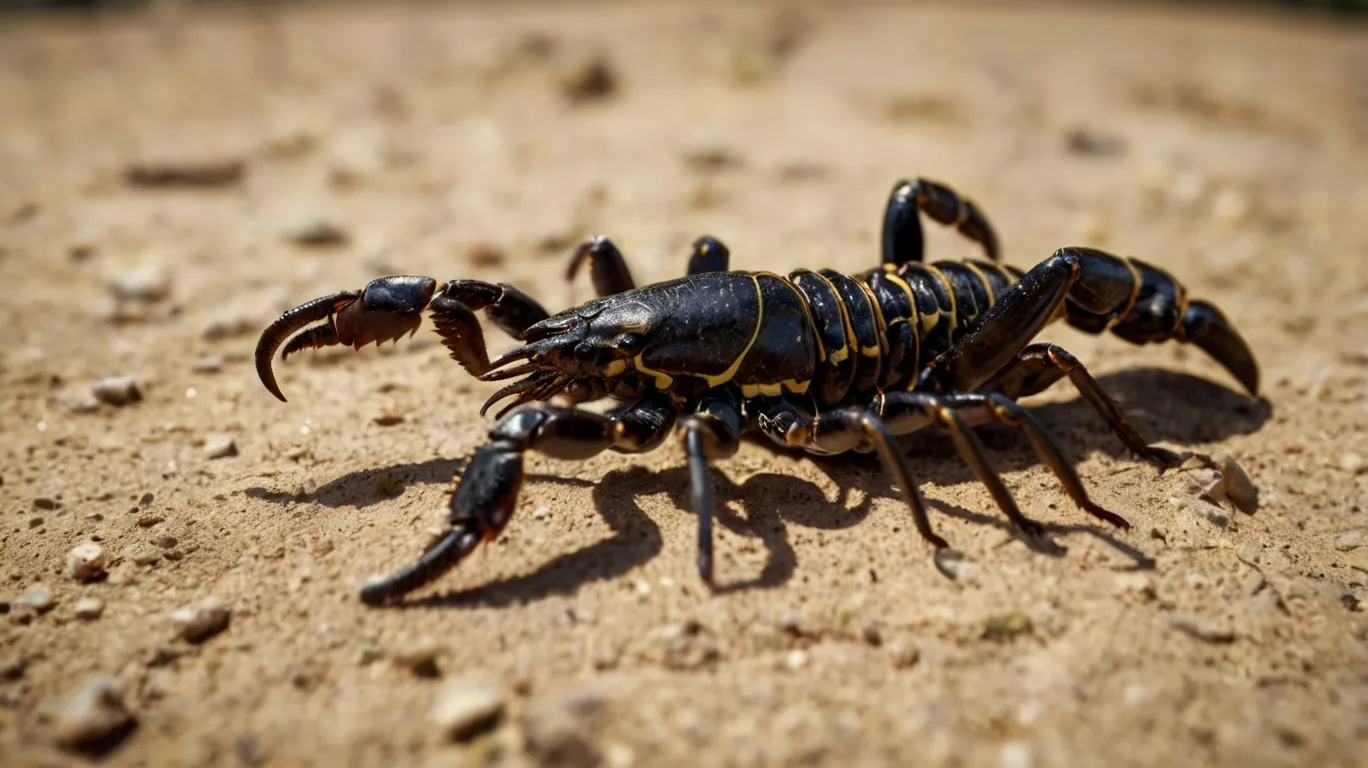Scorpion Safe Interaction & Observation Guide
Interacting Safely With Scorpions
Scorpions are ancient and captivating arachnids, popular in the exotic pet trade for their unique look and often straightforward care. However, they are strictly **observational pets**. ALL scorpions possess venom delivered via a stinger on their tail. While the potency varies greatly by species, **handling is NEVER recommended** due to the inherent risk of stings.
DANGER: DO NOT HANDLE SCORPIONS. Handling scorpions poses a significant risk of being stung. Some species (e.g., *Leiurus*, *Androctonus*, *Centruroides*) have medically significant venom that can be dangerous or even lethal to humans, especially children, the elderly, or those with allergies. Even species with milder venom can cause intense pain and localized reactions. Interaction must remain hands-off.

Understanding Scorpion Venom and Safety
Respecting their defensive capabilities is paramount.
- Venom Variability: Venom potency differs vastly. Emperor Scorpions (*Pandinus imperator*) have mild venom, often compared to a bee sting. Deathstalkers (*Leiurus quinquestriatus*) have potent, dangerous venom. KNOW YOUR SPECIES and its potential risks.
- Defensive Nature: Scorpions sting defensively when they feel threatened or cornered. They don’t sting aggressively without provocation.
- Pinchers (Pedipalps): While the stinger is the primary concern, larger scorpions can also deliver a painful pinch with their claws.
- Secure Enclosure: A secure, escape-proof enclosure is essential for keeping venomous animals safely contained.
Hands-Off Interaction Methods
Enjoy your scorpion through careful observation and safe husbandry.
- Observation: Most scorpions are nocturnal. Use a red or moonlight bulb to observe their nighttime activities like hunting, exploring, or burrowing without disturbing them with bright light.
- Feeding with Tools: Use long (12+ inch) tongs or forceps to offer prey (crickets, roaches) and remove uneaten food. Never use your fingers.
- Maintenance with Tools: Use long tools for spot cleaning, adding water to the dish, or adjusting decor. Plan maintenance carefully to minimize stress and escape opportunities.
- Rehousing/Transferring: This is the highest risk activity. Use the “cup and lid” or “deli cup” method. Coax the scorpion into a sturdy container using long forceps or a soft tool, then securely lid it. Perform transfers inside a larger secure bin to contain potential escapees. NEVER use your hands.
Safe Husbandry Practices
Careful routines minimize risks during maintenance.

- Know Where It Is: Always visually locate the scorpion before opening the enclosure or performing maintenance.
- Use Appropriate Tools: Invest in long, sturdy forceps or tongs.
- Work Calmly: Avoid sudden movements that could startle the scorpion.
- Secure Lid Promptly: Always securely fasten the enclosure lid immediately after any interaction.
- Emergency Plan: Know the potential severity of your species’ sting and have a plan (e.g., contact information for poison control, nearest hospital) in the unlikely event of a sting, especially if keeping medically significant species.
Recognizing Defensive Behavior
Understanding warning signs helps prevent stings.
- Tail Raised/Curved Forward: The classic defensive posture, ready to sting.
- Open Pedipalps (Claws): Another sign of readiness to defend.
- Rapid Movement/Trying to Flee: Indicates the scorpion feels threatened.
- Hissing/Stridulation (Some Species): Audible warning sounds produced by rubbing body parts together.
- Give Space: If defensive behaviors are observed, cease interaction immediately and allow the scorpion to calm down. Do not provoke it further.
Observation Only 窶 Scorpions are fascinating but potentially dangerous animals. Their care demands respect for their venomous nature. The only safe interaction is observation from outside a secure enclosure and using appropriate tools for all maintenance. NEVER attempt to handle a scorpion.